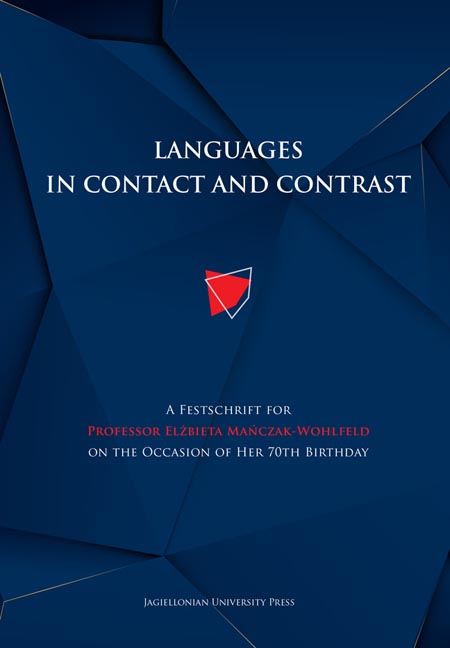 Languages in Contact and Contrast
Languages in Contact and Contrast Published online by Cambridge University Press: 14 October 2023
Introduction
The major goal of this paper is to demonstrate that recovering the speaker-intended meaning may involve not only resolving semantic underdeterminacies but also dealing with indeterminacies of the utterance and to argue that underdeterminacy and indeterminacy of meaning should be treated as distinct pragmatic phenomena. Most pragmatic models attend to underdeterminacy: it is, in fact, their raison d’être, at the same time neglecting indeterminacy, even though it is also an intrinsic feature of communication. Relevance theory (Sperber and Wilson 1986/95; Wilson and Sperber 2004, 2012) deals with both, highlighting essential differences between the two and offering a homogenous and comprehensive account of what they involve. What is more, it provides a plausible motivation for their role in human communication. Concentrating on indeterminacy, this paper examines the nature of the underlying speaker’s intentions, suggesting that, on the one hand, they set a lower boundary on the level of relevance that the communicator manifestly intends the addressee to expect, and on the other, they encourage the recipient to move beyond what I label the threshold of informativity and seek further cognitive effects to offset the processing effort. These effects, even though encouraged by the communicator, may draw on assumptions departing from those in the speaker’s mind, but are, paradoxically, part and parcel of the communicated content. In this way, as will be pointed out below, indeterminacy – just like underdeterminacy – contributes to efficiency of verbal communication, allowing the speaker to communicate much more than is said and bringing about the cognitive alignment between the interactants.
Semantic underdeterminacy
The realisation that linguistic expressions as used for communicative purposes severely underdetermine speaker-intended, context-dependent, specific meanings has informed research in human communication for several decades now (see, e.g., Atlas 2005; Bach 1994, 2007; Bezuidenhout 1997; Carston 2002a; Ifantidou 2014; Jodłowiec 2015; Jucker et al. 2003; Nerlich and Clark 2001; Recanati 2002a, 2002b, 2004; Searle 1983; Seuren 2009; Sperber and Wilson 1986/95, 2002, 2008; Wilson and Sperber 2004; Vicente and Martínez-Manrique 2005; Žegarac 2006). The sources of underdeterminacy are numerous: apart from being ambiguous and vague, utterances may be conceptually truncated (that is they fail to articulate some conceptually important information), they may contain gradable expressions, whose comprehension depends on standards or comparison classes that may be underspecified, and their illocutionary force may have to be adequately contextually settled (Belleri 2014), to mention just the most obvious aspects of underdeterminacy.
To save this book to your Kindle, first ensure [email protected] is added to your Approved Personal Document E-mail List under your Personal Document Settings on the Manage Your Content and Devices page of your Amazon account. Then enter the ‘name’ part of your Kindle email address below. Find out more about saving to your Kindle.
Note you can select to save to either the @free.kindle.com or @kindle.com variations. ‘@free.kindle.com’ emails are free but can only be saved to your device when it is connected to wi-fi. ‘@kindle.com’ emails can be delivered even when you are not connected to wi-fi, but note that service fees apply.
Find out more about the Kindle Personal Document Service.
To save content items to your account, please confirm that you agree to abide by our usage policies. If this is the first time you use this feature, you will be asked to authorise Cambridge Core to connect with your account. Find out more about saving content to Dropbox.
To save content items to your account, please confirm that you agree to abide by our usage policies. If this is the first time you use this feature, you will be asked to authorise Cambridge Core to connect with your account. Find out more about saving content to Google Drive.